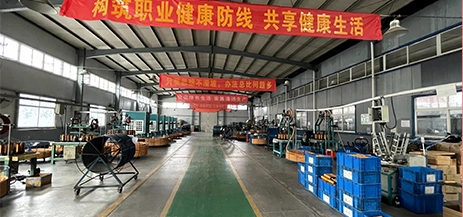power steering hose gasket
Understanding Power Steering Hose Gaskets Importance, Types, and Maintenance
The power steering system is a crucial component in modern vehicles, designed to enhance the driver's control and ease of steering the vehicle. One integral part of this system is the power steering hose gasket, which plays a vital role in ensuring the durability and efficiency of the power steering system. In this article, we will explore the importance of power steering hose gaskets, the different types available, and tips for maintenance.
What is a Power Steering Hose Gasket?
A power steering hose gasket is a sealing component that is used to connect the power steering hoses to the pump and the steering gear. It is designed to prevent the leakage of power steering fluid, which is essential for optimal performance. Power steering fluid lubricates the system, ensuring smooth operation and providing the necessary hydraulic pressure to assist with steering. Without an effective gasket, fluid leaks can occur, leading to a range of issues that can compromise vehicle safety and performance.
Importance of Power Steering Hose Gaskets
The primary function of a power steering hose gasket is to seal the connection points in the power steering system. This sealing is paramount for several reasons
1. Prevent Fluid Leaks The most critical role is to prevent power steering fluid from leaking out of the system. A leak can not only decrease the effectiveness of the steering system but can also lead to further damage to other components of the vehicle.
2. Maintaining Hydraulic Pressure The power steering system relies on hydraulic pressure generated by the pump. A compromised gasket can lead to a drop in pressure, making it difficult to steer the vehicle, especially at low speeds.
3. Enhancing Safety A properly functioning power steering system is crucial for safe vehicle operation. Any malfunction due to a faulty gasket can increase the risk of accidents, especially in emergency situations.
4. Extending the Life of the Power Steering System By ensuring a leak-free environment, gaskets help to prolong the lifespan of the power steering components, saving on costly repairs and replacements over time.
Types of Power Steering Hose Gaskets
Power steering hose gaskets come in various designs and materials. The choice of gasket depends on the specific application, vehicle type, and the operating conditions of the power steering system. Common materials include
power steering hose gasket

- Rubber A popular choice due to its flexibility, rubber gaskets can accommodate slight variations in surface irregularities and are resistant to many fluids.
- Metal Used in high-performance applications, metal gaskets provide durability and resistance to high temperatures and pressures.
- Composite Materials Some gaskets are made from composite materials that combine the advantages of rubber and metal, providing a balance between flexibility and strength.
Maintenance Tips
To ensure the longevity and reliability of power steering hose gaskets, regular maintenance is essential. Here are some tips
1. Visual Inspection Regularly check the power steering system for any signs of fluid leaks around the hoses and connections. Early detection of leaks can help prevent more severe issues.
2. Fluid Level Checks Maintain the proper power steering fluid level, as low fluid levels can put additional stress on the gaskets and other components.
3. Regular Service Follow the manufacturer’s recommended service intervals for the power steering system, including flushing and replacing the fluid as necessary.
4. Replace Worn Gaskets If you notice any signs of wear or failure in the gaskets, replace them promptly to prevent leaks and ensure proper functioning of the power steering system.
Conclusion
Power steering hose gaskets may seem like a small component, but they play a critical role in the functioning of a vehicle’s steering system. Regular maintenance and timely replacement of worn gaskets are essential for ensuring safety, performance, and longevity of the power steering system. By understanding the importance of these gaskets, vehicle owners can take proactive steps to protect their vehicles and enjoy a smoother, safer driving experience.
-
Ultimate Spiral Protection for Hoses & CablesNewsJun.26,2025
-
The Ultimate Quick-Connect Solutions for Every NeedNewsJun.26,2025
-
SAE J1401 Brake Hose: Reliable Choice for Safe BrakingNewsJun.26,2025
-
Reliable J2064 A/C Hoses for Real-World Cooling NeedsNewsJun.26,2025
-
Heavy-Duty Sewer Jetting Hoses Built to LastNewsJun.26,2025
-
Fix Power Steering Tube Leaks Fast – Durable & Affordable SolutionNewsJun.26,2025

